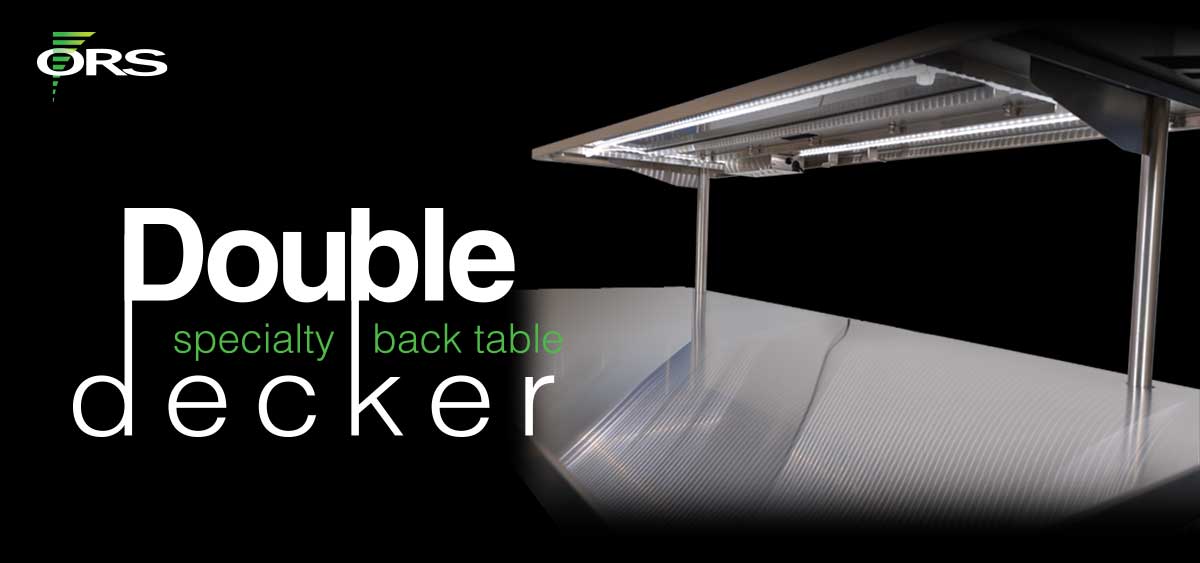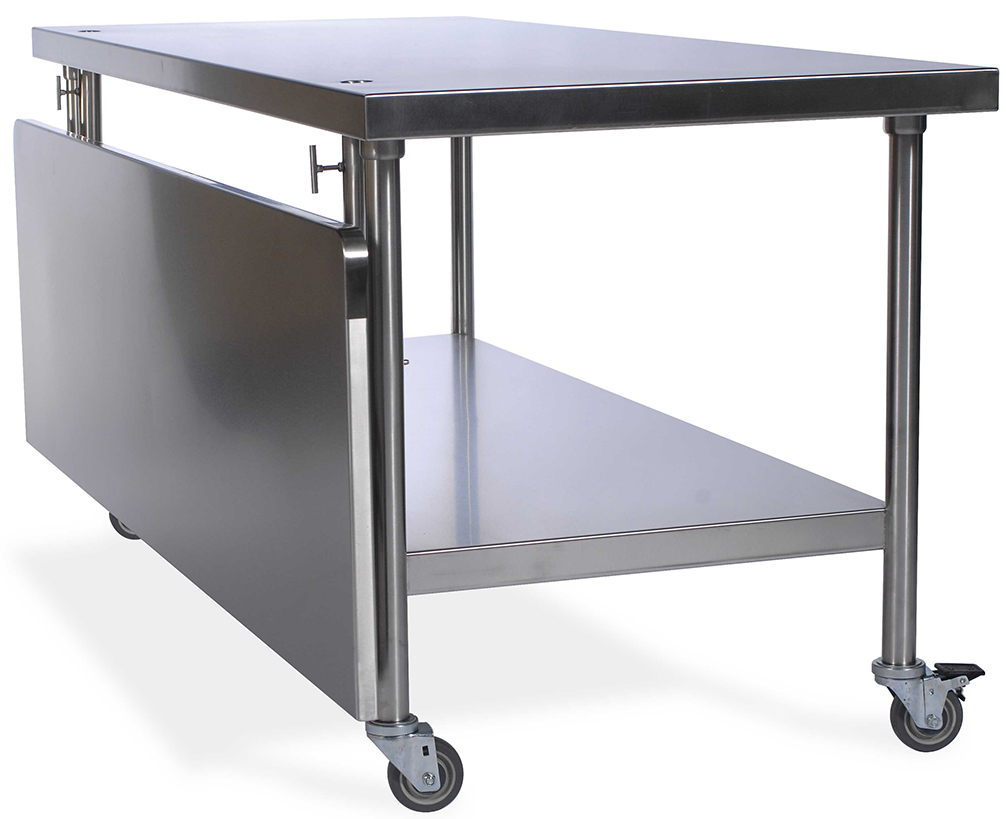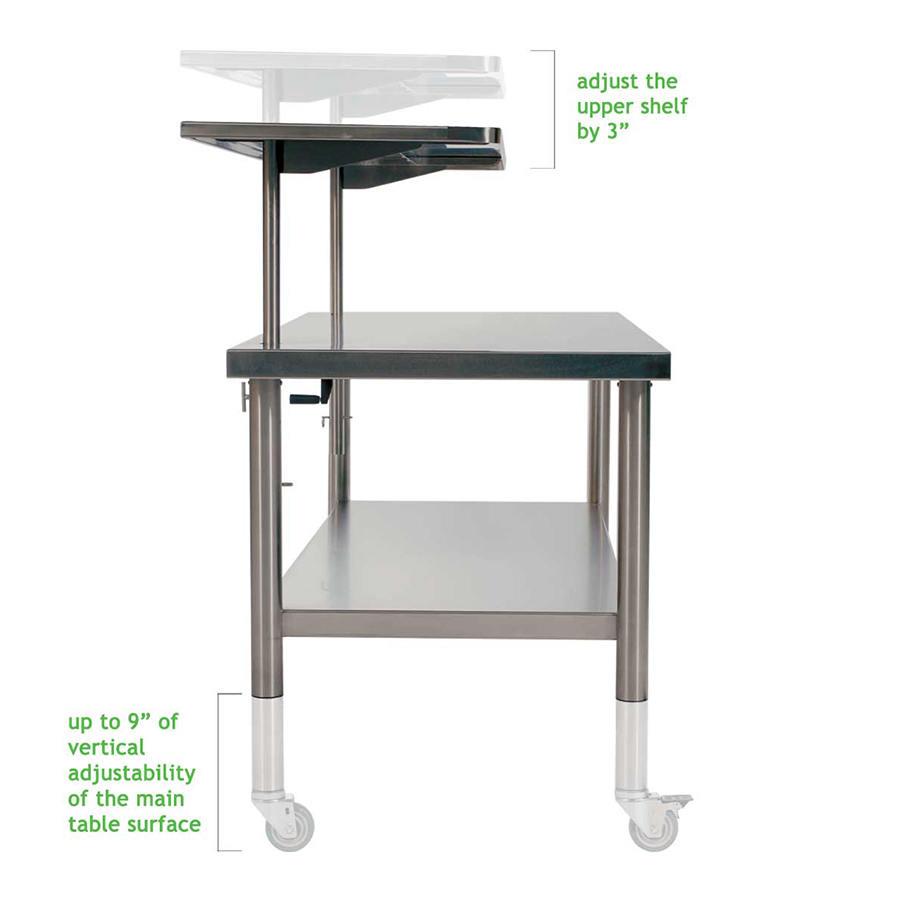
Operating rooms have been around for centuries but what they look like and encompass has constantly evolved to keep up with changes in medical practices. This article will discuss the current design limitations of operating rooms and how today’s modern equipment, like OR Specific’s Double-decker back tables, can improve the use of space creating better efficiency, organization, comfort, safety, and overall patient care.
Today’s Operating Room Design
Unlike operating rooms of the past that used rudimentary tools and instruments, Twenty-first century operating rooms have become highly specialized and technologically advanced environments. Digital imaging, robotics, and computer-assisted surgery have revolutionized neurosurgery, orthopedics, and cardiovascular procedures. However, while these spaces have modernized to serve the medical community, operating rooms can still have limitations and challenges:
Limited Space: Traditional operating rooms often have limited space making it challenging for surgical teams to maneuver and access equipment efficiently. This limitation can also restrict the types of procedures performed in the room.
Inefficient Workflow: Ineffectively designed operating rooms can result in inefficient workflow and increased procedure times. Surgical teams may face challenges in organizing equipment, accessing supplies and effectively communicating during procedures, leading to delays and potential complications.
Infection Control Challenges: Maintaining a sterile environment is critical in the operating room to prevent surgical site infections. Traditional designs may have surfaces that are difficult to clean and disinfect properly, increasing the risk of contamination.
Limited Flexibility: Traditional operating rooms may lack the flexibility to accommodate evolving surgical techniques and technologies. As new procedures emerge and equipment requirements change, outdated designs may become obsolete and require costly renovations or upgrades.
Patient and Staff Safety: Safety and comfort are essential for both the patient and surgical staff during procedures that can last for several hours. Traditional operating rooms may lack ergonomic features and amenities to enhance comfort. This can lead to fatigue and discomfort, which can cause a safety risk for patients and staff.
Introduction of the Double-decker Back Table
Back tables continue to be an important and essential piece of operating room equipment. To keep up with the evolution of operating rooms and address some of the limitations, back tables have continued to modernize, paralleling the advancements in surgical techniques, instrumentation, and sterilization practices.


OR Specific’s Double-decker back tables have taken modern design a step further. By adding an upper shelf, our two-tiered back tables improve visibility and organization making them ideal for today’s complex surgical procedures that can be implant and instrument-intensive. The additional space removes the need to stack trays or use multiple tables.
To maximize versatility and ease the transition between surgeries, OR Specific back tables are offered in three different sizes to fit into any OR space. There is a four-foot wide option to accommodate the storage needs of large or complex cases, while the upper shelf can be removed and placed in the storage position when fewer surgical tools are needed.
Not only is efficiency improved, but the Double-decker tables are specifically designed to accommodate the weight of surgical tools that are needed for large cases, such as orthopedics, open heart, spine, or craniotomies. Moreover, with the increasing prevalence of robotic surgeries, our clients have discovered that the Double-decker table excels as a back table due to its adaptability, particularly with technologically advanced and oversized surgical tools, such as those used in setting up for Da Vinci surgical cases.
Because surgical procedures require in person surgical technicians, surgeons and staff, improving and optimizing ergonomics is one of our paramount goals. We make our two-tier tables adjustable to accommodate medical teams of varying heights. With the turn of a crank or push of a button, the Double-decker back table adjusts to the ideal height. The main surface can be adjusted from a minimum height of 29” to a maximum of 38”. The upper shelf is positioned at 12” above the main table surface or may be adjusted an additional 3” for a maximum height of 15”.
Future Outlook and Predictions
While OR Specific has been raising the bar on operating room back tables, our work isn’t over. Technology will continue to advance, becoming more sophisticated and ever-present. Back tables will need to develop and integrate with digital systems providing easier access to patient data, imaging results, and surgical plans. Wireless and remote monitoring capabilities will allow surgical teams to communicate with specialized experts across different locales. Having this information easily accessible will streamline surgical workflows while increasing patient safety as the latest data will be readily available during procedures.
Other technological advances in the operating room will likely include robotics and AI that will need to be integrated into back tables to increase surgical precision and efficiency. Robotic arms could be incorporated to handle instruments and positioning, and AI could analyze surgical data in real-time.
Outside of technology, further customization of back tables is likely to allow for easier transitioning between different surgical procedures. Modular designs that allow for simple changes to the table layout will optimize efficiency and reduce errors. At the same time, ergonomics will continue to be a feature of back table design, evolving to meet the height, position, reach and physical characteristics of the presiding surgical team.
We can also look forward to advancements in infection control with back tables possibly incorporating antimicrobial coatings, easier to clean components, seamless surfaces and other innovative design features to ensure a sterile environment.
Overall, advancements in operating room back table technology have the potential to significantly impact operating room design and surgeries by improving efficiency, ergonomics, infection control, and patient outcomes. OR Specific is already researching ways to improve our back tables and give operating rooms exactly what they need to meet modern demand. Visit our website or contact us to learn more about our back tables and perfect fit™ drapes.





